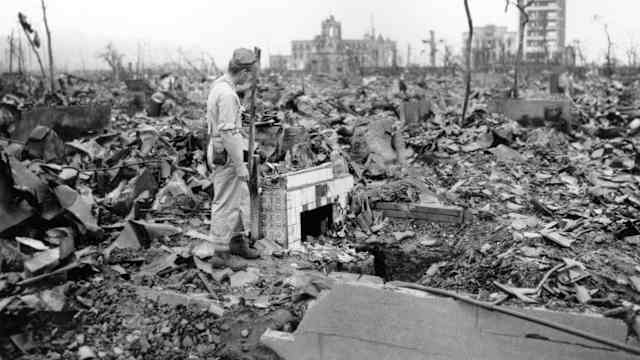As Europe inched toward world war, the close ties many Italian Americans had with friends and family in Italy came under increasing scrutiny. Many Americans with Italian ancestry initially supported the growth of Italy under the fascist rule of Benito Mussolini. In 1936, J. Edgar Hoover, the FBI’s director, began to secretly surveil individuals and organizations he deemed likely to side with the enemy during the war to come.
It was a massive operation, and an effective one. By 1939, the FBI had assembled a massive list of information on “suspicious individuals.” Known as the “ABC List,” it divided people into categories based on their likelihood of danger to the nation. For many people on the list, which included tens of thousands of American citizens, the only basis for suspicion was their ethnicity.
Then, Japan attacked Pearl Harbor in December 1941. Though the U.S. had not yet formally declared war on Italy, FBI agents began arresting Italians anyway in anticipation of entering the war in Europe. President Franklin Delano Roosevelt issued a series of proclamations that declared citizens of Japan, Germany and Italy to be “alien enemies of the United States.” (As a later Department of Justice investigation found, the lists included permanent residents as well.) One hundred forty-seven Italians were already in custody when the U.S. declared war on Italy on December 11, 1941. Some stayed in the same camps where Japanese Americans were interned during the war.
Enemy aliens had to abide by curfews and turn in their weapons, radios and cameras. Most could not travel more than five miles from home without getting permission. The FBI began arresting and detaining people who were categorized as “As”—considered to constitute an actual threat to the United States—on the list.
As hundreds of Italians and Italian Americans awaited hearings to determine whether they would stay in detention, Congress signed legislation designed to protect a broad swath of the West Coast that was thought to be of special military and intelligence significance. The military determined who they thought should stay and who should go, and individuals could not be represented by legal counsel in the hearings that determined their fate. Other areas were declared off-limits to other individuals considered enemy aliens, including the San Francisco waterfront, areas around hydroelectric plants and areas near military bases.
The FBI searched houses for contraband items, confiscating radios and other items, and forced Italians, even those who were naturalized citizens, to report changes of address and employment. The government restricted the employment and movement of Italian fishermen, confiscating their boats and cutting off their access to the waters that provided their livelihoods. And though the federal government officially discouraged refusing Italians employment, they looked the other way when employers like Southern Pacific Railroad terminated them en masse.
At least 10,000 Italian Americans were evacuated in California, and forced to move out of their homes to areas outside of the evacuation zone. The government even came close to evacuating all Italians and Italian Americans along a massive swath of the state stretching from Los Angeles to Orange County, California, and, writes legal historian Joseph C. Mauro, those peaceful residents were only saved from being booted from their homes by the President himself.
Despite the persecution they endured, a large number of Italian Americans served in the U.S. military during World War II. Between 750,000 and 1.5 million people of Italian descent are thought to have served in the war, and 14 Italian Americans received the Medal of Honor for their service.
All in all, 600,000 Italians were affected by the policies, which were only lifted in 1942, once Roosevelt realized he’d need the support of the Italian American community if the U.S. was to invade Italy. On October 12, 1942, U.S. Attorney General Francis Biddle declared that Italians were no longer enemies of the state.









